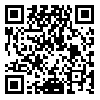Volume 9, Issue 2 (9-2017)
3 2017, 9(2): 31-44 |
Back to browse issues page
Download citation:
BibTeX | RIS | EndNote | Medlars | ProCite | Reference Manager | RefWorks
Send citation to:



BibTeX | RIS | EndNote | Medlars | ProCite | Reference Manager | RefWorks
Send citation to:
Natural diet of golden mullet (Liza aurata) on the southern coast of the Caspian Sea, in the spring and autumn. 3 2017; 9 (2) :31-44
URL: http://jmb.ahvaz.iau.ir/article-1-565-en.html
URL: http://jmb.ahvaz.iau.ir/article-1-565-en.html
Abstract: (5783 Views)
Golden gray mullet (Liza aurata) is one of the fish of the Caspian Sea and essential role in determining the environmental awareness of the diet of this species and understand its position in the food web structure in Caspian Sea. The aim of this study was the golden gray mullet biology, nutrition and dietary preferences in autumn (reproductive period) and beginning of spring (Non-reproductive period) on the southern coast of the Caspian Sea. It also examined the relationship between biological parameters (weight and length) and the gastrointestinal tract, including the stomach and intestines. For this purpose, samples were taken from 100 golden gray mullet of the seine, in spring and autumn in 10 stations (Astara, Talesh, Anzali, Rodsar, Tonekabon, Noshahr, Fereydonkenar, Behshahr, Torkaman, Khajenafas), in the southern coast lines of the Caspian Sea. The samples were biometric in the lab. Regression relationship showed a high correlation between total length and body weight (r=0.82). Given the significant level achieved (P>0.05) and considering the value of b, the length-weight regression relationship does not have a significant difference with the number 3, the isometric growth formula was obtained. After biometric samples, investigation revealed the contents of the digestive tract vacuity index in the autumn and spring was respectively 20±28.28 and 4±43.8. According to Pearson correlation test, there was significant inverse relationship between length and weight indicators with GSI index and feed rate but there was no significant relationship between weight and length of fish stomach contents and RLG index. The average of RLG index to length of the fish in autumn and spring was 4.84 ± 5.70 and 3.95 ± 0.59 respectively, according to the values of the RLG is more than one and medium, golden gray mullet are omnivorous and tend to herbivores, this fish is overeating and lack staple food. The FP index in autumn for Gammarus by 25%, then Mytilus by 21% and in the spring to Ctenophora by 46%, as the main food item, side dish is respectively higher incidence of Nereis, crushed food, Cardium, Chironomidae larvae, Entermorpha and Hydrobia of course, the occurrence of any of the items are fed by different golden gray mullet, the fluctuation of the season, and access the environment variable weather conditions in the spring and fall. GSI index shows, feeding in the spring, has been more favorable and the feed rate declined in the autumn and reproductive period.
Type of Study: Research |
Subject:
Fisheries
Received: 2017/09/2 | Accepted: 2017/09/2 | Published: 2017/09/2
Received: 2017/09/2 | Accepted: 2017/09/2 | Published: 2017/09/2
| Rights and permissions | |
 |
This work is licensed under a Creative Commons Attribution-NonCommercial 4.0 International License. |



